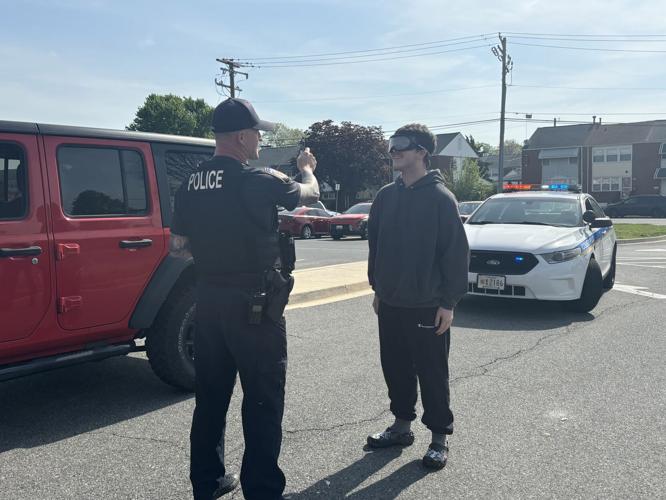
(Dundalk, MD) - April 28, 2025 - “You’re going to jail,” might not be the most conventional phrase to tell high school juniors on a Thursday morning. At Patapsco High School, the words rang across the parking lot all morning last Thursday, April 24, prompted by teachers and volunteers helping with MileOne Autogroup’s distracted driving program.
MileOne, also known as Heritage in the greater Maryland region, hosts Drive Smart Maryland, a fully-funded educational program geared toward driving-age students in Baltimore County. Throughout the duration of a class period, students participate in road safety trivia and participate in a host of simulation activities, which range from a mock police stop to a virtual reality driving test.
Patapsco is just one of the 12 schools in the county to receive a visit from the program. MileOne will stop at Hereford High School and Dundalk High School in the next couple of weeks.
The visits come at a crucial time in the school year. April is National Distracted Driving Awareness month, and with a slew of upcoming events slated for high school students, dubbed the “100 deadliest days” by MileOne — prom, graduation, senior week — the safety reminders could potentially save lives.
“We are all about giving back to the communities where we live and work, and we really want to start with the newest drivers, so this is our way of doing that,” Chief Giving Officer of MileOne Amanda Kodeck said.
Although the topic at hand is serious — and often deadly — the program lightened the moods of its teenage participants.
Students had the opportunity to drive a hot pink motorbike through an obstacle course riddled with traffic cones while wearing their choice of an alcohol or cannabis headset meant to mimic the feeling of intoxication, varying in intensity depending on a potency percentage label on the back of the goggles.
Before taking off, every student was sent off with a solemn message: “Every cone you hit is a human.”
While students tried their best to stay on course, few completed the track without mowing down at least one or two cones. The hands-on experience affirmed what the students already knew by law; driving while intoxicated, regardless of how much you ingested, could take someone else’s life.
A similar simulator was set up across the parking lot from the obstacle course.
Inside of a Jeep, an instructor invited students in one at a time to don a virtual reality headset that replicated a wooded, two-way street. The car’s steering wheel connected to the headset through Bluetooth, allowing for students to feel as if they were driving the car while navigating a virtual street.
About a minute into driving, students would be handed a cell phone and asked to send a text: “On my way,” “be there soon” and “got to go” were common options for the teenagers to send. With the distraction, students would veer off the simulated road, finding themselves in a thicket of trees or even accidentally driving off of steep cliffs.
At the end of the ride, students were given a ticket detailing everything they did correctly or incorrectly.
By the end of the two-day program, nearly 600 students cycled through the simulators. While returning to class, they were encouraged to sign the Drive Smart pledge, which encourages students to drive without distractions or while under the influence.
“We have our students coming up on prom, graduation, summer events, things like that,” Elizabeth Krupa, Patapsco’s community school facilitator, said. “We just really wanted to make sure that they had all of the tools and the knowledge in order to make appropriate decisions and to run the wheel — not only to help themselves, but our community, as well.”
Original article from The Dundalk Eagle